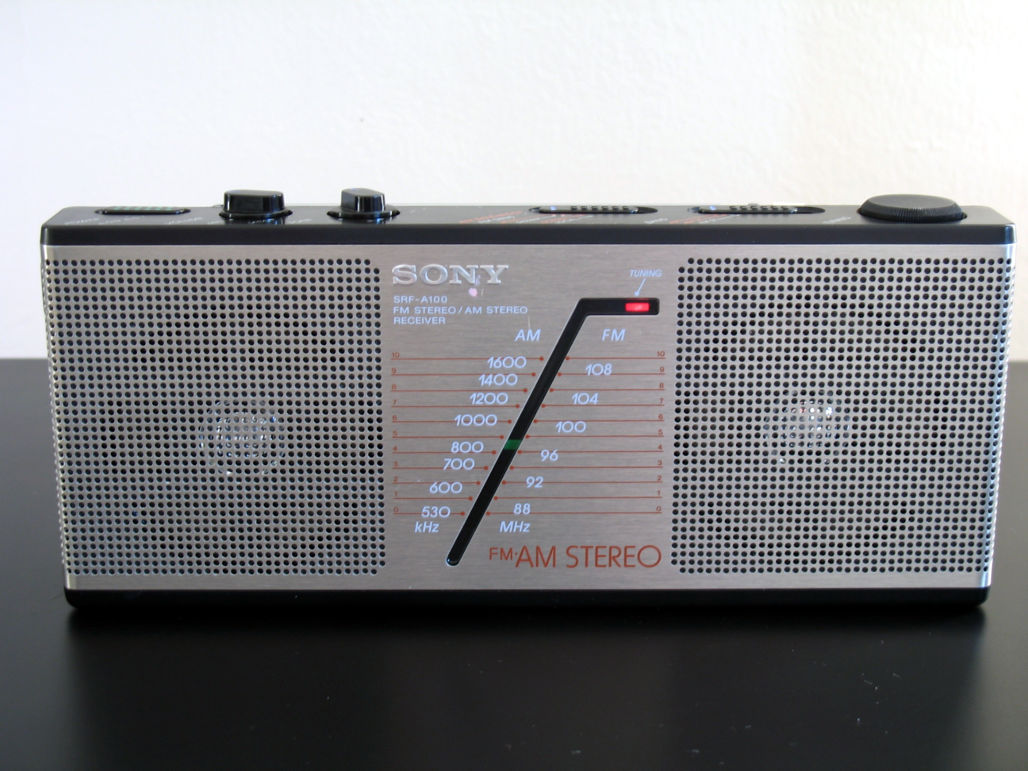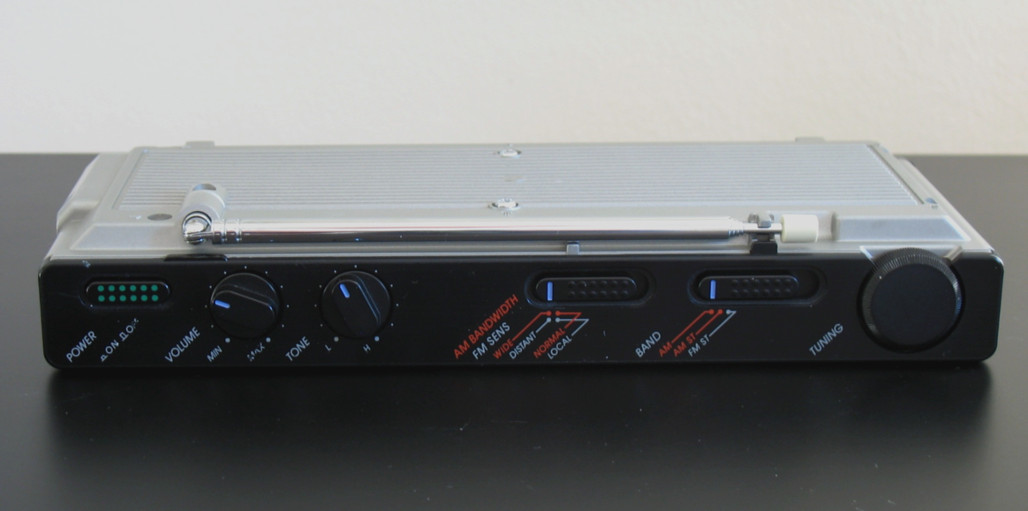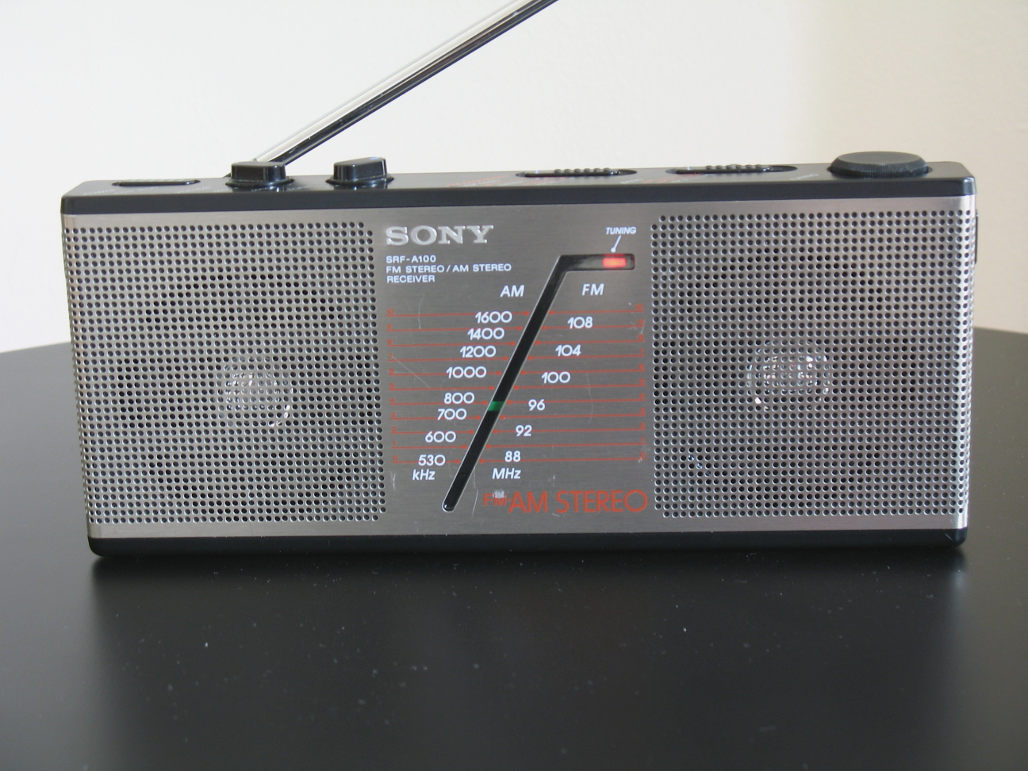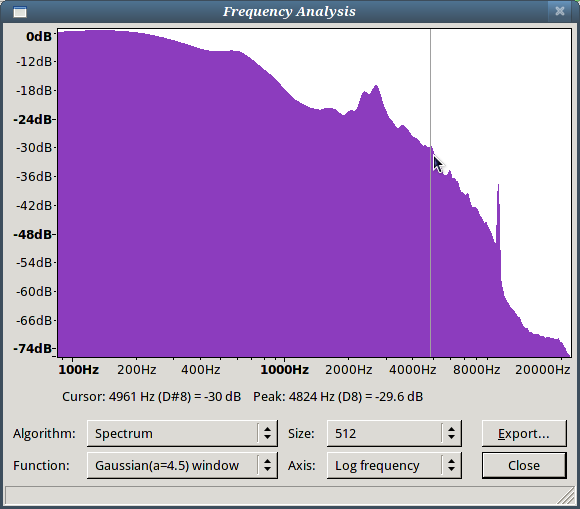
AM radio has the reputation of not sounding good for music, but it doesn't have to be that way. The Sony SRF-A100 is proof.
When AM listening began to decline around 1980, a fairly old idea, AM stereo, was revived. AM music stations hoped it would give them a boost to help them compete with FM stations. As I described the situation in my post on the Sony SRF-A1, the Walkman version of the SRF-A100, four competing AM stereo systems were developed. The Federal Communications Commission said, "Let the marketplace decide!" The marketplace said, "No!"
Even so, better-sounding radios were produced, without the high-frequency rolloff typical of so many AM radios.
I bought my first SRF-A100 in 1984 at a catalog distributor in St. Louis. There were two AM stereo stations in St. Louis at the time, KUSA, the former KSD at 550 kHz, and little WESL at 1490 kHz. It was hard to receive WESL at my suburban location, but KUSA was a powerhouse, with good-sounding audio.
The next year, I moved to Houston, where there were, at various times, two or three AM stereo stations. And that seemed to be the situation in many cities for about 10 years. There was a handful of AM stereo stations, but the radios seemed to be hard to find and, after the first couple of years, AM stereo wasn't strongly promoted.
Especially before 1990, when the upper frequency response of AM stations was limited to 10 kHz, this radio could make almost any AM station sound good. In stereo, AM stations could sound almost as good as FM -- and, depending upon the audio processing used at the station, could sound better.

The SRF-A100 has two audio bandwidths: narrow, with high-frequency rolloff performance typical of most AM radios, and wide, with frequency response reaching above 10 kHz. Unlike the SRF-A1, the bandwidth setting is independent of selecting stereo reception. You can listen to AM stereo stations with a narrow audio bandwidth for long-distance or nighttime reception, as well as a wide bandwidth for situations where interference isn't so much of a problem.
Sony radios attempted to decode all four AM stereo systems authorized for use in the United States in the 1980s. Three of them actually were pretty close, and the Sony multi-system chip could figure out how to handle them. The fourth, the Kahn system, was considerably different, and required the user to select it with a switch on the front of the unit. The Sony SRF-A200, which was sold only in Australia, was identical to the SRF-A100, except that it did not have the multi-system switch. Australia explicitly adopted one standard, the Motorola C-QUAM system. Eventually, the Motorola system emerged as a de facto standard, and the Federal Communications Commission in the United States finally adopted it, long after other countries had already done so.
The center tuning scale of the SRF-A100 is flanked by two small speakers. They can sound a bit bright, but that's to be expected from small speakers. You can't defeat physics. You can get better results by listening through the headphone jack. When there were AM stereo stations on the air, I would often plug my SRF-A100 into my stereo system. The results were very good. FM still sounded a little better but a well-engineered AM stereo station could also be quite pleasant to listen to. The unit can run on AC power with an adapter, not included, but it gets good battery life on three AA batteries.
There are a few drawbacks. The tuning scale is hard to read. There's just one tone control, a treble cut-and-boost. Some units have a little bit of hiss at high volumes.
The FM section of the SRF-A100 is best disregarded. It's awful. It manages to combine poor sensitivity with being prone to severe front-end overload. The audio quality from the FM side of this radio is muddy, too. This is one place where the Walkman version of the radio is far better.
In any event, you get this radio for its AM performance. It is sensitive, selective, and sounds good. It can fetch prices of more than $100 on eBay, though if you're lucky, you can sometimes get it for less. I have bought two such radios in online auctions; the photos at the beginning of the post are of one of those radios, which I bought from a Canadian seller.

And here's a photo of my original SRF-A100, purchased in 1984 in St. Louis. It has been an exceptional AM radio.

This is a graph plotting the frequency response of the radio when using the wide audio bandwidth. You can see that the radio has better frequency response than the station, which is limited to an upper frequency of 10 kHz. That frequency shows up in the graph as a spike, resulting from interference generated by distant stations on adjacent channels.
Other AM stereo radios from Sony: SRF-A1 | SRF-AX15 | SRF-42